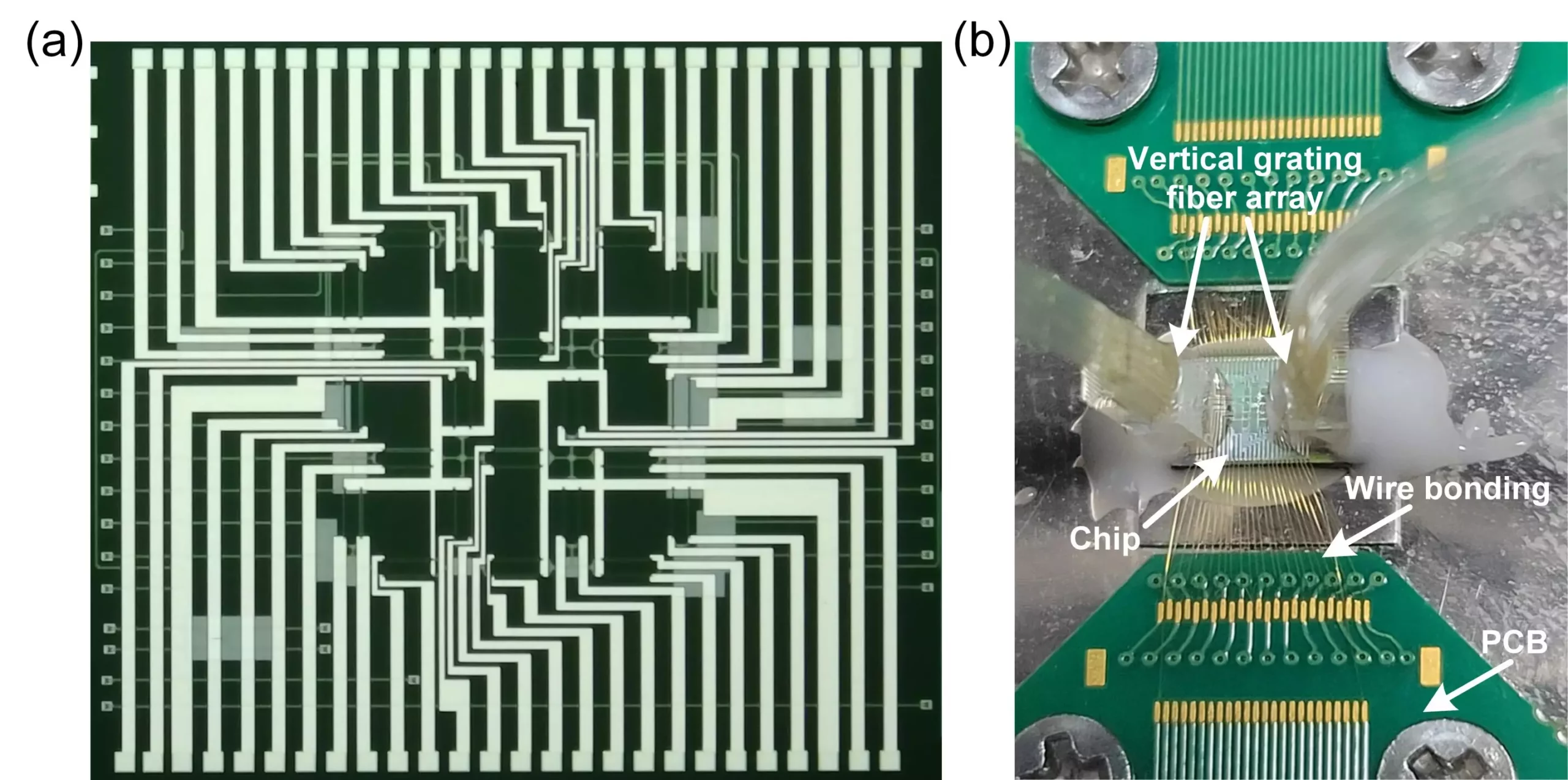Scientists have recently unveiled a groundbreaking development in optical chip technology. This innovative optical chip possesses the ability to self-configure and perform various functions without the need for complex manual adjustments. Led by Jianji Dong, a research team from China’s Huazhong University of Science and Technology has successfully created a chip that has the potential to revolutionize the field of optical neural networks.
Optical neural networks play a crucial role in data-heavy tasks like image classification, gesture interpretation, and speech recognition. However, the previous generation of photonic integrated circuits posed a significant challenge due to their complex internal structure, requiring users to understand the chip’s principles and adjust its basic units manually. The new optical chip eliminates this hurdle by functioning as a “black box.” Users need only set a training objective, and with the assistance of computer control, the chip will self-configure to achieve the desired functionality based on the input and output.
The researchers detailed their breakthrough in the Optical Materials Express journal. Their chip harnesses a network of waveguide-based optical components called Mach-Zehnder interferometers (MZIs), strategically arranged in a quadrilateral pattern. By exploiting this unique configuration, the chip can seamlessly self-configure for optical routing, low-loss light energy splitting, and matrix computations essential for creating neural networks.
Jianji Dong envisions the future development of larger-scale programmable waveguide networks embedded within chips. As the technology evolves, it may even rival the capabilities of field-programmable gate arrays (FPGAs), prominent electrical integrated circuits that are reprogrammable after manufacturing.
A critical aspect of optical neural networks involves training the interconnected nodes using known data and determining the weights between each pair of nodes. This training process requires sophisticated matrix multiplication techniques. Building upon the concept of FPGAs, the researchers aimed to create an MZI topological network structure supporting both forward-propagating and feedbackward propagation for matrix operations.
The chip’s self-configurability is realized by adjusting the voltages of electrodes. This manipulation generates various light propagation paths within the quadrilateral network. To optimize the training speed, the researchers incorporated a gradient descent algorithm that enhances the convergence rate of the cost function – a metric evaluating the network’s accuracy in each training iteration. Instead of updating a single variable, the chip adjusts the voltages of all adjustable electrodes, resulting in a faster convergence rate.
The researchers successfully demonstrated the chip’s ability to perform positive real matrix computation, a vital component of optical neural networks, with minimal error in comparison to the target matrices. Another notable achievement was optical routing, a specialized form of positive real matrix computation. Optical routing enables efficient signal routing between equipment, such as processors and memory units, in data centers. Optical approaches exhibit lower latency and power consumption when processing a significant number of signals compared to their electrical counterparts.
Additionally, the chip excelled in low-loss optical power splitting, a process that effectively divides a single input light into beams with proportional energy at the output port. Statistical analysis based on 11 test sets revealed an energy loss of less than 1.16 dB during splitting. The capability of low-loss optical energy splitting facilitates simultaneous signal processing across various components on the chip, including processors and photodetectors.
The research team’s current focus revolves around enhancing the chip’s matrix operation capabilities to widen its potential range of applications. Moreover, they are exploring additional applications for matrix computing beyond optical neural networks. With continuous advancements, this novel self-configurable optical chip possesses the ability to reshape the landscape of optical neural networks and usher in a new era of high-performance data processing.


Leave a Reply